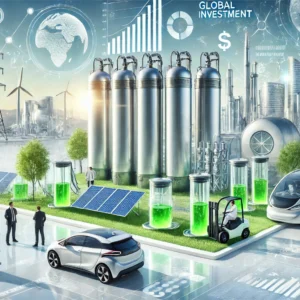
Climate finance is reshaping our world by backing eco-friendly startups and projects, transforming policies, and driving a massive economic shift. This revolutionary approach not only channels funds into renewable energy and sustainable practices but also ignites debates in government halls, boardrooms, and even sports arenas. Investors are increasingly wagering on a future where every dollar spent helps cool down our warming planet. In this sprawling narrative, government initiatives, political maneuvers, groundbreaking research, celebrity opinions, and both youthful and seasoned perspectives all converge in an intricate tapestry of ambition and challenge.
Governmental Blueprints and Policy Pioneers
In many parts of the globe, governments are aggressively setting the stage for climate finance. For example, international agencies like the Green Climate Fund have become synonymous with the drive toward sustainable investments. National strategies now incorporate elaborate funding schemes and tax incentives designed to stimulate private investment in climate-positive projects. In some countries, major policy rollouts have even included specific timetables and milestones—milestones that, as noted by the UNFCCC, are geared toward ensuring that every project meets strict environmental and social standards.
However, policy-making is rarely a smooth ride. There’s often a dramatic interplay between bureaucratic red tape and visionary leadership. At times, you might even sense that governmental blueprints have a sort of “edgy” side—think of a symphony that occasionally slips a misplaced note. Yet, when these policies come together, they create a powerful mechanism for change, paving the way for substantial investments in clean energy and climate resilience.
Political Currents and High-Stakes Negotiations
Not far behind the formal policies are the buzzing political debates. In various global capitals, lawmakers and political pundits have been vocally supporting climate finance as the linchpin of future economic growth. Often featured in major news outlets, political debates underscore the urgency of funding climate-friendly innovations. For instance, discussions in the European Parliament and U.S. Senate have revealed stark divisions—while some champions herald climate finance as a surefire way to revitalize industries, others worry about the short-term economic disruptions and fiscal risks involved.
Amidst this cacophony, political narratives sometimes feel like a patchwork quilt of half-formed ideas and emphatic declarations. Occasionally, you might catch a moment of inconsistency where lofty ideals meet real-world pragmatism. Nonetheless, the political momentum is undeniable. High-profile summits and trade meetings, often referenced by the World Bank and the IMF, reveal an earnest drive to craft regulations that can simultaneously promote growth and safeguard the environment.
Research Laboratories: The Brain Trust of Innovation
Behind the scenes of policy and politics, research labs are fervently testing new ideas to make climate finance a reality. Scientific minds in universities and specialized institutions are busy dissecting and redesigning financial models to better integrate renewable energy projects. Recent breakthroughs, as reported by various academic studies and platforms like ISO, are not only improving the efficiency of funding mechanisms but also enhancing transparency and accountability in project investments.
A particularly intriguing aspect of this research is the melding of advanced financial analytics with environmental science. Teams are developing models that can predict the success rate of climate investments by analyzing everything from carbon credits to market volatility. It’s almost as if the researchers are weaving a complex tapestry—a mixture of hard data and intuitive forecasting—that promises to unlock unprecedented funding for green projects. This integration of technology and traditional finance is a game changer, reflecting the complex yet promising future of climate finance.
Business Titans and Celebrity Endorsements
The business world is not one to be left on the sidelines. Entrepreneurs and corporate leaders have been quick to recognize the lucrative potential of climate finance. Big names in industries as diverse as technology, energy, and even fashion are now investing heavily in green startups. In boardrooms around the world, discussions about climate-friendly projects are as common as debates over quarterly earnings.
Some of these high-powered discussions are punctuated by unexpected endorsements from celebrities and sports personalities. Imagine your favorite athlete or blockbuster star casually mentioning their support for a renewable energy startup during an interview—these endorsements add a dash of glamour and relatability to a topic that might otherwise seem dry. For example, a prominent business magnate once remarked in a candid chat that investing in climate finance is like planting a tree that grows revenue, an analogy that resonated with both seasoned investors and young social media enthusiasts alike.
Even more intriguing is the chatter among sports figures, whose public statements on sustainability have sparked lively debates. Their comments often carry a mix of straightforward optimism and the occasional quirky offhand remark—adding a human touch to the otherwise complex world of green investments. Such voices bring a refreshing perspective to the conversation, proving that climate finance isn’t just a matter of balance sheets and policies—it’s a movement fueled by passion and a shared desire for a sustainable future.
Intergenerational Perspectives: Wisdom Meets Innovation
Climate finance is a topic that bridges generations. Older citizens, with their rich tapestry of experiences, often view these investments as a lifeline to a safer planet—a hope kindled by memories of past environmental crises and economic upheavals. Their cautious optimism is balanced by a deep-seated skepticism about the reliability of new financial models. Many reminisce about a time when financial ventures were simpler, yet they remain convinced that this new wave of climate finance is crucial for preventing future calamities.
In contrast, the younger generation, ever eager and digitally native, champions climate finance with unbridled enthusiasm. Young professionals, environmental activists, and startup founders view these investments as the ultimate disruptor in the fight against climate change. Social media platforms are abuzz with discussions on how climate finance can revolutionize urban planning, transportation, and even personal lifestyles. The energy of youth, combined with innovative ideas and a willingness to challenge the status quo, is proving to be a potent force in redefining financial priorities.
This mix of wisdom and youthful vigor creates a vibrant dialogue that is both inspiring and occasionally contradictory. On one hand, you have the seasoned pragmatism of older investors; on the other, the unrestrained ambition of the new generation. This intergenerational exchange is perhaps one of the most exciting aspects of climate finance, as it embodies a truly democratic vision of sustainability—where experience and innovation dance together in a sometimes clumsy but always hopeful waltz.
Global Business: Earnings, Revenues, and Economic Paradigms
Delving into the financial arena, climate finance is swiftly emerging as a significant contributor to global earnings and revenue streams. Private equity firms, venture capitalists, and multinational corporations are all aligning their strategies to capitalize on this green revolution. According to insights from Speciale Invest and NAP Global Network, there has been a marked increase in funds directed toward clean energy initiatives over the past few years.
This surge in investments isn’t just about doing good for the planet—it’s also about robust economic returns. Analysts predict that by 2025, climate finance could account for a substantial portion of the global investment portfolio. The market dynamics here are fascinating: while there are risks involved, the potential rewards are immense, often drawing comparisons to the early days of the internet boom. In many ways, climate finance represents the confluence of sustainability and profitability, challenging the old adage that green is only for saving the planet and not for making a profit.
It’s important to note that economic trends in this space aren’t linear. The journey is marked by ups and downs—occasional funding delays, regulatory challenges, and sporadic market fluctuations. Yet, despite these hiccups, the overall trend is upward. Global revenue streams from climate finance projects are expected to skyrocket, driven by continuous innovation and growing investor confidence. This financial transformation is turning heads in boardrooms worldwide and setting the stage for a future where every investment counts toward a cleaner, greener economy.
Important Dates, Timetables, and Geographic Hotspots
The timeline for climate finance initiatives is as dynamic as the markets they influence. In many nations, key dates are already etched in policy documents and strategic plans. For instance, multiple governments have set ambitious targets for reducing carbon emissions and enhancing green infrastructure by 2025. Countries like Germany, Japan, and the United Kingdom have detailed timetables that outline phased investments, regulatory reforms, and infrastructural upgrades—all aimed at boosting climate finance.
Urban centers across the globe are also stepping up. According to research shared on the C40 Knowledge Hub, many cities are now employing innovative financial models to attract private capital. These initiatives include green bonds, sustainability-linked loans, and public-private partnerships that are designed to spur local investments in renewable energy, waste management, and sustainable urban development.
Moreover, regional summits and international conferences play a pivotal role in setting the agenda for climate finance. Events organized by institutions like the World Bank and the IMF offer platforms for dialogue, collaboration, and the announcement of major funding initiatives. These gatherings not only serve as networking hubs for investors and policymakers but also as stages where global leaders articulate their visions for a sustainable future.
The Human Element: Social Impact and Community Voices
While the financial and political mechanics of climate finance are fascinating, the true impact of these investments is felt on the ground by everyday people. Social narratives around climate finance often encompass both hope and trepidation. In community meetings and local forums, older residents frequently express their concerns over rising energy costs and environmental degradation, yet they also view these new financial instruments as a promise of a better future. Their voices carry a mix of skepticism and optimism, shaped by decades of firsthand experience with economic cycles and environmental policies.
In contrast, young activists and entrepreneurs often see climate finance as a rallying cry for radical change. Their passion is palpable in the digital sphere, where hashtags and viral campaigns push for faster, bolder action on climate issues. This divergence in sentiment between generations creates a rich, albeit sometimes messy, dialogue that underscores the multifaceted nature of sustainability. In a way, these varied opinions are like different chords in a complex symphony—each distinct, occasionally clashing, but ultimately contributing to a harmonious vision for a greener tomorrow.
Local communities, especially in regions hit hardest by climate change, are becoming increasingly involved in these discussions. Grassroots organizations are working tirelessly to ensure that investments in climate finance translate into tangible benefits, such as improved infrastructure, job creation, and enhanced public services. The integration of local knowledge with global financial strategies is one of the most promising trends, fostering a sense of shared responsibility and collective action.
Diverse Voices: From Boardrooms to the Streets
The conversations around climate finance stretch across a broad spectrum of society. Business leaders, for instance, often speak about these investments in terms of risk management and long-term profitability. They view climate finance not just as a moral imperative but as a strategic asset in an increasingly competitive global market. Comments from prominent CEOs and investors have highlighted that embracing climate finance is akin to betting on the future—one where sustainability and financial gain are not mutually exclusive.
Then there are the celebrities and sports stars, whose endorsements sometimes seem a bit offbeat but nonetheless impactful. Their quirky yet heartfelt expressions of support—often delivered in interviews or social media posts—add an unexpected charm to the discourse. It’s not unusual to hear a famed athlete remark that investing in green projects feels like “scoring the goal of a lifetime,” while a renowned actor might compare sustainable investing to “crafting a blockbuster narrative for our planet.” These human touches, despite the occasional informal slip, help demystify the otherwise technical language of finance and make the subject accessible to a wider audience.
Even within the political realm, diverse voices add layers of complexity to the discussion. On one side, you have policymakers arguing that robust climate finance is essential for national security and economic resilience. On the other, critics caution against potential fiscal pitfalls and the risk of over-reliance on untested financial mechanisms. These debates, though sometimes punctuated by abrupt transitions and unexpected digressions, mirror the multifaceted nature of our modern society—one that is ever-evolving, full of contradictions, and ultimately driven by the collective desire for a better future.
Navigating the Complex Web of Financial Models
Climate finance, in its essence, is a blend of innovation and tradition—a complex dance between established financial institutions and avant-garde investment strategies. At its core are instruments like green bonds, sustainability-linked loans, and blended finance models that pool resources from both public and private sectors. These instruments are meticulously designed to offer investors a way to generate competitive returns while funding projects that lower carbon emissions and promote renewable energy.
Financial institutions, from global banks to local credit unions, are rethinking their portfolios to include more climate-friendly options. This shift is often accompanied by detailed risk assessments and scenario planning, which, albeit sometimes feeling overly technical, ensure that every investment is as secure as it is impactful. As detailed in articles by sources such as Speciale Invest and discussions on innovative financing by NAP Global Network, the methodologies behind these financial models are evolving rapidly. They are designed to adapt to market fluctuations, regulatory changes, and even the unpredictable nuances of human behavior.
Yet, as with any revolution, there are moments when the process seems disjointed—a few awkward transitions, perhaps a repeated phrase here and there that underscores the complexity of the topic. But these idiosyncrasies add character, reminding us that the path to a sustainable future is rarely linear, and that every misstep can pave the way for a greater breakthrough.
Future Horizons: Trends and Predictions for 2025
Looking ahead, the future of climate finance is both promising and unpredictable. Predictions suggest that by 2025, the volume of investments in climate-friendly initiatives will have soared, driven by technological advances, policy reforms, and the relentless drive of global investors. Some forecasts even liken the current moment to the early days of the digital revolution—a time when bold ideas and significant risks merged to create transformative change.
Several high-profile projects scheduled for rollout in the next few years are already stirring excitement. For example, innovative urban projects in cities across Europe and North America are incorporating climate finance into their developmental blueprints, with detailed timetables and clear financial milestones. These initiatives are expected to not only reduce carbon footprints but also generate substantial economic activity, ultimately contributing to a more resilient global economy.
Notably, regional hubs such as the European Union, parts of Asia, and select African nations are emerging as focal points for these investments. With established policies and enthusiastic investor communities, these regions are positioning themselves as leaders in the climate finance arena. The transformative potential of these investments is expected to ripple through local economies, creating jobs, enhancing infrastructure, and even redefining social norms in ways that were once thought unimaginable.
FAQs
Q1: What is climate finance?
Climate finance refers to the funding of initiatives and projects that mitigate climate change by reducing greenhouse gas emissions and promoting renewable energy. It encompasses a variety of financial instruments and strategies designed to channel both public and private funds into sustainable projects.
Q2: How does climate finance benefit the economy?
Investments in climate finance can boost economic growth by creating jobs, spurring innovation, and generating long-term revenue streams. This dual approach—addressing environmental challenges while promoting financial returns—makes it a key component of modern economic strategies.
Q3: Which regions are leading in climate finance investments?
The European Union, parts of Asia (such as Japan and South Korea), and increasingly some African nations are emerging as leaders. Cities worldwide are also adopting innovative financing models to attract private investment into climate-friendly infrastructure.
Q4: How are governments supporting climate finance?
Governments are introducing policy frameworks, tax incentives, and dedicated funding mechanisms to support climate finance. Initiatives like the Green Climate Fund and national strategies outlined by the UNFCCC are central to these efforts.
Q5: What role do private investors play in climate finance?
Private investors, including venture capitalists and corporate giants, are critical players. They view climate finance not only as a way to contribute to environmental sustainability but also as an opportunity for long-term financial gains.
Concluding Reflections: A Journey of Promise and Complexity
In the end, climate finance is not just a financial model—it’s a mosaic of innovation, human emotion, and relentless ambition. It is as much about policy debates and scientific breakthroughs as it is about personal stories, unexpected celebrity endorsements, and intergenerational dialogues. The journey is filled with unexpected twists and occasional lapses, a reminder that progress is rarely perfect. Yet, every challenge encountered and every new idea tested brings us a step closer to a sustainable, greener future.
Whether you’re a seasoned investor scrutinizing quarterly reports, a government official drafting the next policy blueprint, or a young activist sharing your passion for a cleaner planet on social media, climate finance represents a common ground—a meeting point where diverse ideas coalesce into transformative action. It’s a domain where economic opportunity meets environmental responsibility, where global business dynamics converge with the simple hope of leaving a better world for the next generation.
So, as we navigate the intricate web of policies, research, and market dynamics, let’s embrace the diversity of voices—from the boardrooms and academic labs to the streets and social platforms. The future of climate finance is as much about numbers as it is about nurturing a shared vision of progress, where every investment is a vote for a greener, more sustainable tomorrow.
For more in-depth insights on climate finance, check out reputable sources like the Green Climate Fund, UNFCCC, and the World Bank. Each offers a unique perspective on how governments, investors, and communities are working together to build a future that balances economic growth with environmental stewardship.




